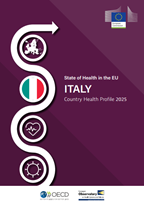HSPM
Health Systems and Policy Monitor
All publications on Italy

Italy’s National Health Service (Servizio Sanitario Nazionale; SSN) provides universal coverage for all citizens and residents. Since October 2013 EU citizens have been able to obtain free (cross border) health care, while temporary visitors from outside the EU must pay the treatment costs for any care received.
The SSN is regionally based, with the central government, 19 regions and two autonomous provinces sharing responsibility. The central government defines "Essential Levels of Care (LEAs)", the national benefits package guaranteed to all citizens and registered foreign residents, and provides the resources to deliver them. Regions oversee the organization, planning and delivery of health services. LEAs include hospital care, pharmaceuticals, outpatient health services, and rehabilitation and community health services. Over-the-counter pharmaceutical products are not covered and dental care coverage is very limited.
The system is funded by national and regional taxes, with national resources matching the regions’ to ensure equal, and age-adjusted, per-capita funding. Access is largely free at point of use and public (e.g. district and regional hospitals) and accredited private providers deliver services. Great emphasis is placed on primary care; individuals are required to register with a GP/paediatrician (up to age 14), who are incentivized to serve as gatekeepers and care coordinators, referring only as appropriate.
Despite a strong commitment to equity in health care provision across regions, regional differences exist in population health status, access and quality of services. Northern and central regions generally have higher capacity and more advanced technology with care being perceived to be better quality, leading patients to travel to northern and central regions for services.
Subscribe to our newsletter
Sign Up